
Volodymyr, previously known as Volodymyr-Volynskyi (Володимир-Волинський) from 1944 to 2021, is a small city in Volyn Oblast, northwestern Ukraine. It serves as the administrative centre of Volodymyr Raion and the center of Volodymyr urban hromada. It is one of the oldest cities in Ukraine and the historic centre of the region of Volhynia; it served as the capital of the Principality of Volhynia and later as one of the capital cities of the Kingdom of Galicia–Volhynia. Population: 37,910.

Bar is a city located on the Riv River in Vinnytsia Oblast, central Ukraine. It is located in the historic region of Podolia. It served as the administrative center of the former Bar Raion until 2020. The city's estimated population is 15,337.

Ostroh is a city in Rivne Oblast, western Ukraine. It is situated on the Horyn River. Ostroh was the administrative center of Ostroh Raion until 2020, but as a city of oblast significance did not belong to the raion. Currently the city is the centre of Ostroh urban hromada. Population: 14,894.

Olyka is a rural settlement in Lutsk Raion, Volyn Oblast, western Ukraine. It is located east of Lutsk on the Putylivka Rriver. Its population is 3,032.
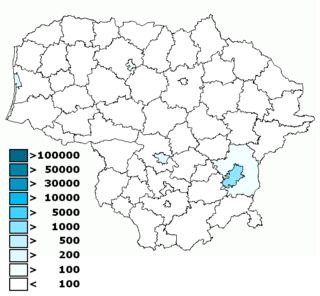
The history of the Jews in Lithuania spans the period from the 14th century to the present day. There is still a small community in the country, as well as an extensive Lithuanian Jewish diaspora in Israel, the United States, South Africa, and other countries.

Liuboml is a city in Kovel Raion, Volyn Oblast, western Ukraine. It is located close to the border with Poland. It serves as the administrative center of Liuboml urban hromada. Population: 10,295.
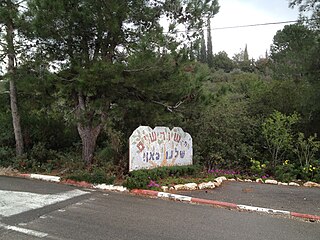
Shorashim is a community settlement in northern Israel. Located in the lower Galilee and affiliated with the Conservative movement, it falls under the jurisdiction of Misgav Regional Council. In 2022 its population was 599.
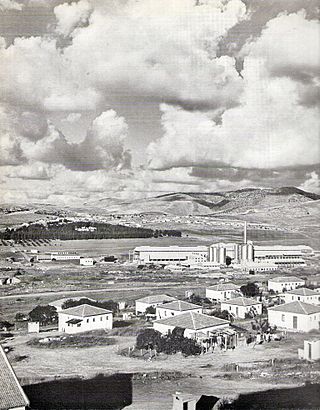
Hartuv, Arabic: ارتون) or Har-Tuv was an agricultural colony in the Judean Hills established in 1882 on land purchased from the Arab village of Artuf by English missionaries. It was destroyed in the 1929 Palestine riots but was rebuilt in 1930. In 1948 it was abandoned again. Hartuv was the starting point for the Convoy of 35 during the 1948 war. Hartuv is now an industrial zone near Beit Shemesh.
Aryeh Carmell was a British Orthodox rabbi, scholar, and author.

The Center for Jewish Art (CJA) is a research institute at the Hebrew University of Jerusalem, devoted to the documentation and research of Jewish visual culture. Established in 1979, it documented and researched objects of Jewish art in ca. 800 museums, libraries, private collections and synagogues in about 50 countries. Today, the Center's archives and collections constitute the largest and most comprehensive body of information on Jewish art and material culture in existence. The CJA's research and documentation is included in the Bezalel Narkiss Index of Jewish Art.
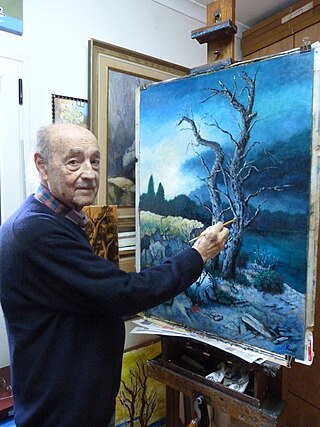
Zeev Kun was an Israeli painter of Hungarian origin. He is the father of the artist Shay Kun.
Yossi Malka, is an Israeli former footballer who played for Maccabi Netanya.
The Myers-JDC-Brookdale Institute (MJB) is a Jerusalem-based applied research and consulting institute on social policy and human services, serving Israel, the Jewish world, and the international community.
Jacob Bunka was a Jewish sculptor, known as the last Jew of Plungė who carved large monumental wooden statues at Holocaust sites in Lithuania.
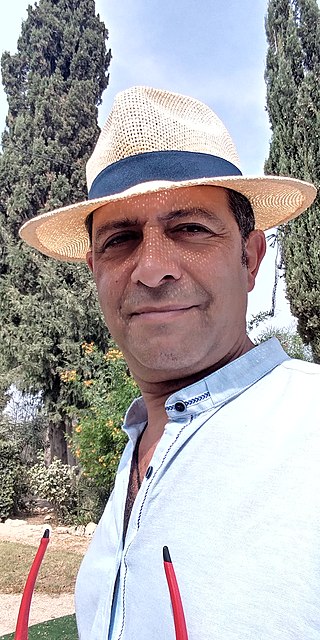
Moshe Alafi is an Israeli producer, director, and creator.

The Synagogue of Alanta is a former Jewish congregation and synagogue, located at 3a Ukmergės Street, in Alanta, in the Molėtai District Municipality, in the Utena County of Lithuania. A wooden synagogue that was designed in the Romantic style, the building operated as a synagogue from the mid-19th century until it was devastated by Nazis in 1941. Subsequently used for profane purposes, the building was restored during 2021 and now operates as a cultural center.
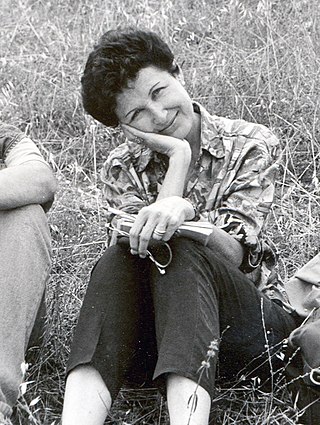
Aliza Cohen-Mushlin is an Israeli art historian, a specialist in medieval Latin and Hebrew manuscripts and Jewish architecture, an author of important researches on the medieval scriptorium.

Daniel "Danny" Gold is an Israeli military leader. He was appointed head of the Israeli Directorate of Defense Research & Development (DDR&D) and a Tat Aluf in the Israel Defense Forces in 2016. Additionally, he serves as the head of the National Technological Center for Combatting the COVID-19 pandemic at the Israeli Ministry of Defense.














